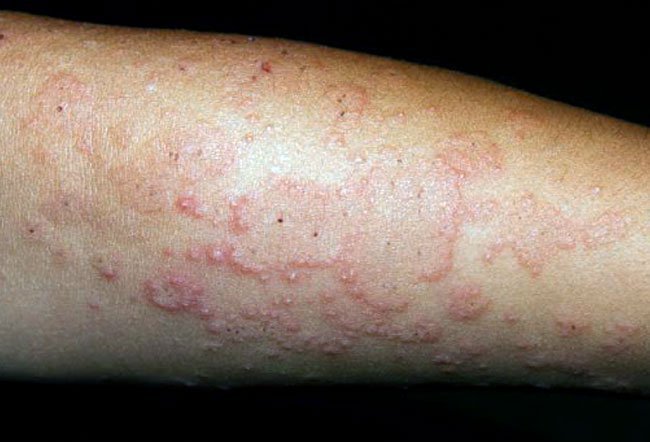How Do You Get Rid of a Polymorphous Light Eruption?

Polymorphous light eruption (PMLE), also called polymorphic light eruption, is a rash triggered by sun exposure. It typically appears as tiny red bumps or slightly raised patches on the skin.
PLME affects people who have developed sensitivity to sunlight and occurs most often during spring and summer, when your exposure to the sun tends to be more frequent. While PLME tends to go away on its own, it can also be treated by:
- Prescription topical medication
- Oral medication
- Phototherapy
- Vitamin supplements
- Adequate sun protection (SPF 30 and higher with UVA and UVB)
- Avoiding sun exposure with clothing and wide-brimmed hats
What causes polymorphous light eruption?
It’s unclear what causes polymorphous light eruption, although the rash appears in people who have developed sensitivity to especially UV radiation from the sun. Tanning beds and tanning beds can also cause problems in people with photosensitivity.
PMLE is thought to be caused by an immune system reaction to UV light, which causes the skin to become inflamed.
What are the different types of polymorphous light eruption?
The most common form of polymorphous light eruption is the papular type. Small papules (bumps) appear all over the body or are densely clumped together.
The plaque type is the second most common pattern. Plaques present as urticarial (hives) and are primarily seen over the arms, lower limbs, and V area of the chest. Itching is very common with this type.
What are the symptoms of polymorphous light eruption?
Polymorphous light eruption typically presents as an itchy rash on the arms, hands, chest, legs, and feet. The face is less commonly affected. The rash may consist of small red bumps, larger red patches, or even blisters.
In rare cases, polymorphous light eruption causes symptoms such as fever, headache, and nausea.
How is polymorphous light eruption diagnosed?
Your doctor diagnoses polymorphous light eruption by examining the rash and figuring out its relationship to the time of sunlight exposure. Generally, no tests are needed, but sometimes, blood tests or skin samples are taken to rule out other conditions. If a biopsy is required, a small sample of skin is removed and examined under the microscope in a laboratory.
Phototesting is sometimes used to confirm a diagnosis. This involves shining some artificial sunlight-type rays (UV or visible light) onto a small area of the skin to observe how the skin reacts.
How is polymorphous light eruption treated?
Treatment options include:
- Mild steroid creams, such as hydrocortisone, to calm down the redness
- Antihistamine tablets to reduce itching
- Short course of corticosteroid tablets (often just called steroids), such as prednisolone, for severe cases
- Light therapy (phototherapy), which involves exposing the skin to UV light in gradually increasing doses to help it become more resistant
- Special sunscreens with high UVA protection
- Creams containing sunscreen plus antioxidants (alpha-glucosylrutin and vitamin E)
- Tablets containing carotenoids, such as beta-carotene
- Vitamin supplements (vitamin E or nicotinamide)
- Cream containing a form of vitamin D

